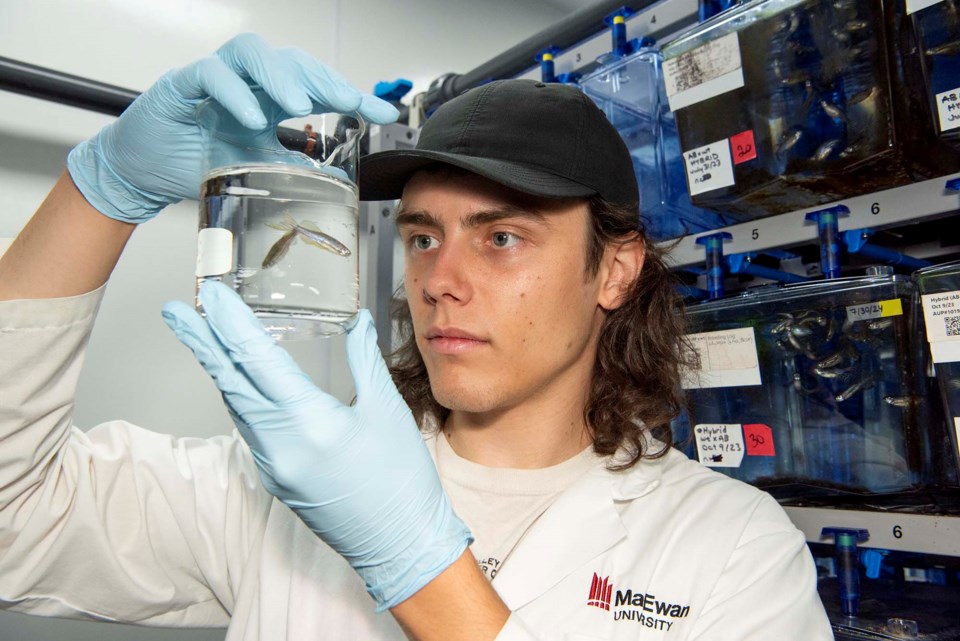Ethan Hagen jokes that he feels like a drug dealer sometimes.
It is, after all, his job to get fish hooked on drugs for science.
Zebrafish have similar nerves and organs to humans, the St. Albert resident explains. By studying the effects of addictive substances on them, researchers can use them as a model to find potential treatments for addiction.
“It is a major problem,” Hagen said of addictions, one that he has seen affect members of his own family.
“It’s not fun to watch.”
A Paul Kane alumnus, Hagen is pursuing his PhD in psychiatry at the University of Alberta. He won a $65,000 Personnel Award for Indigenous Scholars from the Canadian Institutes of Health Research earlier this year to fund his zebrafish research.
Fish on drugs
Born in Inuvik, Hagen said he and his family moved to St. Albert when he was three. He didn’t have much experience with his Gwich’in ancestry growing up, but has been learning more about it in recent years.
“It’s part of who I am as a person,” he said.
Hagen said his interest in science and addictions started young after he started watching science documentaries such as Drugs, Inc. That eventually led him to study zebrafish under U of A psychiatrist Yanbo Zhang, who, along with MacEwan University neuroscientist Trevor Hamilton, is supervising his PhD research.
“One of the basic things we want to do is build a model we can plug-and-play any other drug into,” Hagen said.
Zhang said zebrafish are an excellent way to test drugs because of their low cost (one fish costs about a dollar, compared to $30 for a mouse or $50 for a rat), rapid reproductive cycle, and simple behaviours. Zebrafish share many genes with humans, and are transparent as larvae, meaning you can see their organs develop. Hagen’s research suggests these fish could help researchers test drugs quickly and cheaply and reduce the need for more expensive animal and human tests.
Hagen said his previous research has seen him study the effects of LSD (seen as a potential addictions treatment) and alcohol on zebrafish. This generally involved putting the fish in a tank, adding a set amount of drug, and then transferring them to a testing area.
With alcohol, Zhang said Hagen was able to get the fish to associate exposure to the addictive substance with the colour red. Much like humans hanging around a bar, those fish ended up lingering in red-coloured parts of their tank more often, presenting a clear visual signal of their addiction.
With LSD, Hagen said he tested the fish’s response to a novel object added to their tank: a Lego minifig. He found that fish on LSD were not any more nervous about the tiny plastic person than regular fish, which was a good thing, as it suggests the drug might not increase anxiety in human patients if used as a treatment.
Hagen said he is now studying how nicotine affects zebrafish. He suspects it will cause lower birth weights and higher anxiety, as it does in human babies, and wants to see if nicotine addiction carries on through multiple generations.
A fan of skateboarding and vinyl records, Hagen said he hopes to have his PhD finished by 2026 and to get a job in drug research.
Science is a super-fulfilling environment, and you learn a lot doing it, Hagen said.
“I think it’s just super fun, too, especially if you get the opportunity to work in labs.”
Hagen spoke on his zebrafish studies this Aug. 17-21 at the 18th International Zebrafish Conference in Kyoto, Japan.



